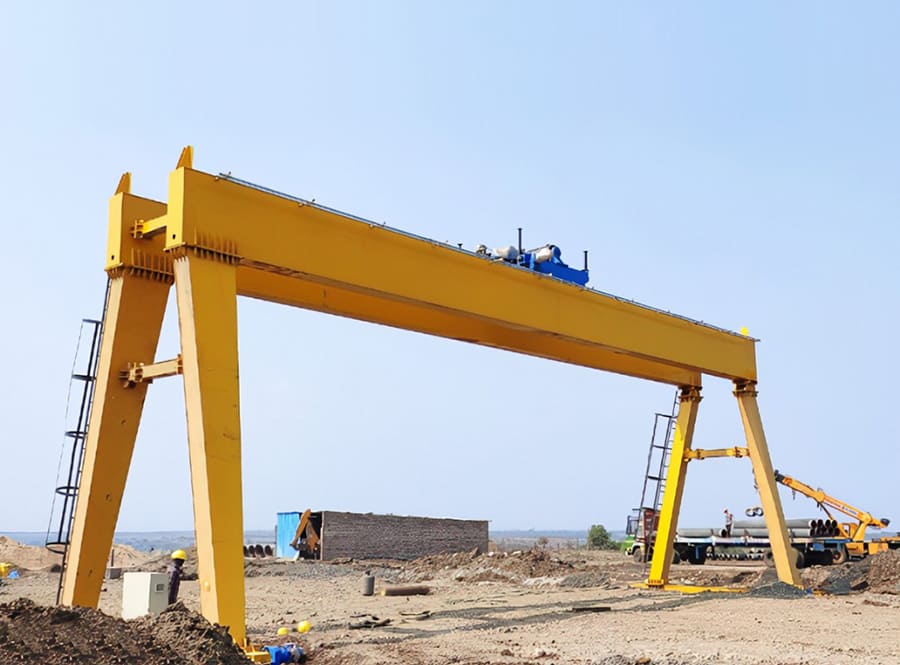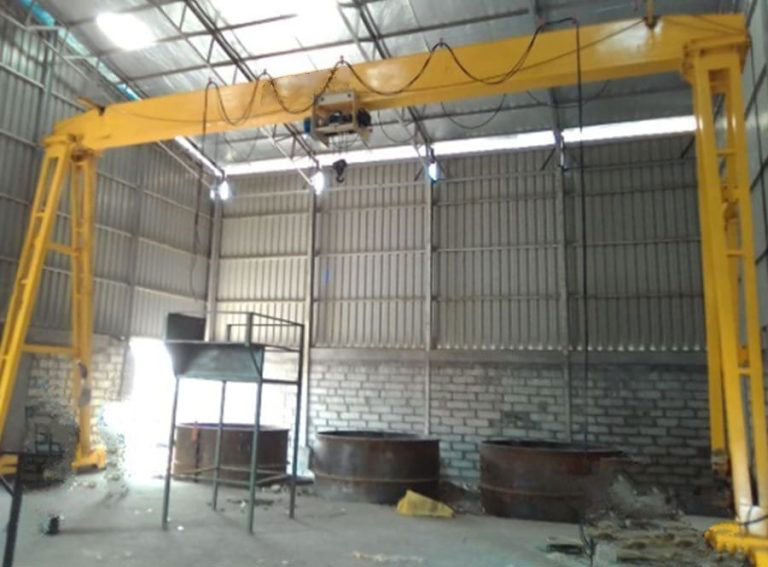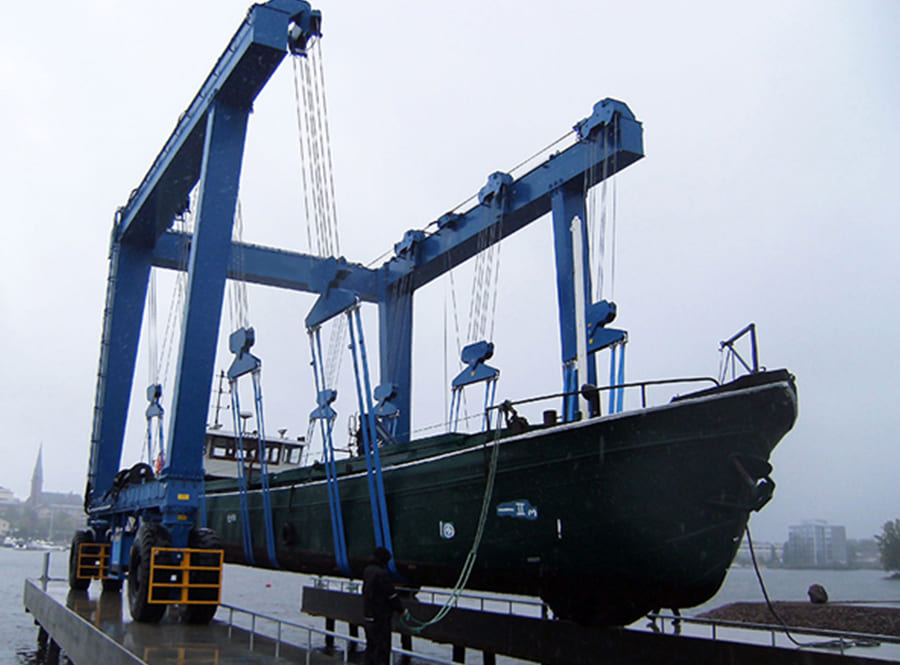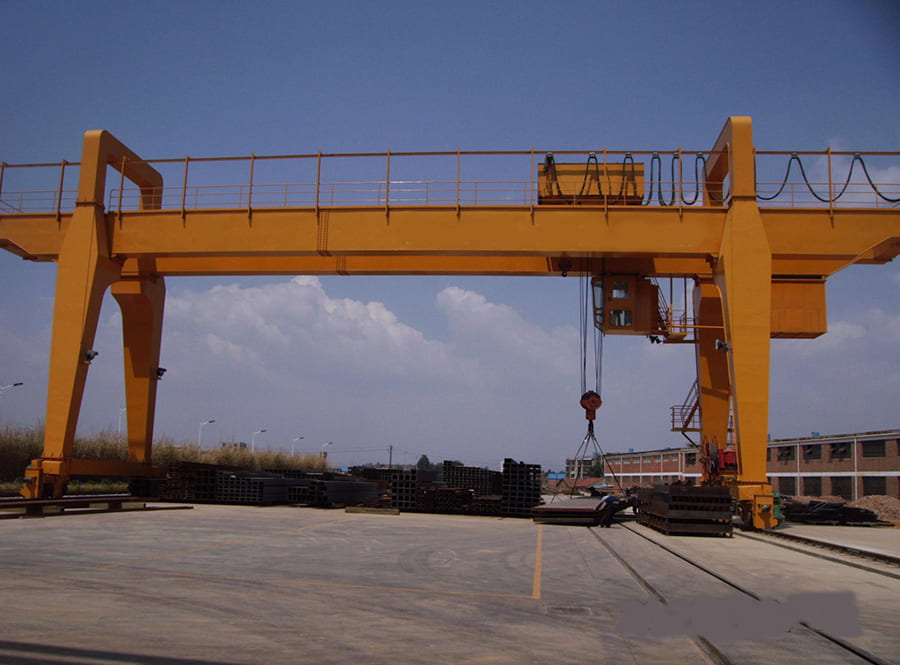Industrial low profile gantry crane is also called: light gantry crane, light gantry crane, small gantry crane, small gantry crane. It has a lifting capacity of up to 2,000 kg and is a movable light gantry crane. It can be easily used wherever it is impossible or uneconomical to use a suspended crane. Light gantry cranes can be simply disassembled into several easily transported parts and quickly assembled at another place of use, a feature that is beneficial in many situations. The lifting capacity of I-beam trackless gantry crane can reach 2000 kg.
1. When lifting heavy objects, the hook wire rope should be kept vertical, and the lifted object is not allowed to be dragged diagonally.

2. Lifting heavy objects should find the center of gravity and tie them firmly. Sharp angles should be padded with wooden skids.
3. The automated low profile gantry crane is not allowed to rotate before the heavy object is lifted off the ground.
4. When lifting or lowering heavy objects, the speed should be even and steady to avoid sudden changes in speed, which may cause the heavy objects to swing in the air and cause danger. When dropping heavy objects, the speed should not be too fast to avoid breaking the heavy objects when they hit the ground.
5. When the crane is lifting a heavy load, try to avoid the lifting arm. When the boom must be lifted while lifting, the lifting weight shall not exceed 50% of the specified weight.
6. When the crane is rotating while lifting a heavy load, you should pay close attention to whether there are any obstacles around it. If there are any obstacles, try to avoid or remove them.
7. No one should stay under the crane boom, and try to avoid people passing through.
8. When two low profile gantry crane for sale operate on the same track, the distance between the two cranes should be greater than 3m.
9. When two cranes lift an object together, the lifting capacity shall not exceed 75% of the total lifting capacity of the two cranes, and the walking and lifting movements of the two cranes must be consistent.
10. Lifting and luffing wire ropes need to be inspected once a week and records should be kept. Specific requirements must be implemented in accordance with relevant regulations on lifting wire ropes.
11. When the truck is traveling or turning without an empty vehicle, the hook should be at least 2m above the ground.
12. When the wind strength exceeds Level 6, work should be stopped immediately. TMK should turn the boom to the downwind direction and lower it appropriately, and hang the hook firmly. The gantry crane must have an iron wedge (rail stop) and raise the hook to the upper limit. At the same time, close the doors and windows, cut off the power supply, and pull the wind rope. This should also be done after work is completed.

13. It is strictly forbidden to stack miscellaneous objects on the crane platform to prevent them from falling and injuring people during operation. Frequently used tools should be placed in a special tool box in the operating room.
14. During operation, it is not allowed to change speed suddenly or reverse the vehicle to avoid causing heavy objects to swing in the air. It is also not allowed to operate more than two operating mechanisms (including auxiliary hooks) at the same time.
15. When driving, the operator’s hands must not leave the controller. If a malfunction occurs suddenly during operation, measures should be taken to safely lower the heavy object, then cut off the power supply and carry out repairs. Inspection and maintenance during operation is strictly prohibited.
16. The low profile gantry crane supplier shall not lift anyone under any of the following conditions:
1) The heavy object exceeds the rated lifting capacity of the crane.
2) The weight of the heavy object is unknown.
3) The signal is unclear.
4) Heavy objects are not tied firmly.
5) Open-air operations are subject to severe weather conditions such as strong winds above Level 6 (Level 5 above the beam), heavy rain, and fog.
6) The lighting for nighttime work is not good.
7) Cable pull.
8) The wire rope is severely worn and has broken strands, and someone is performing maintenance on the crane or in the machine room.





















